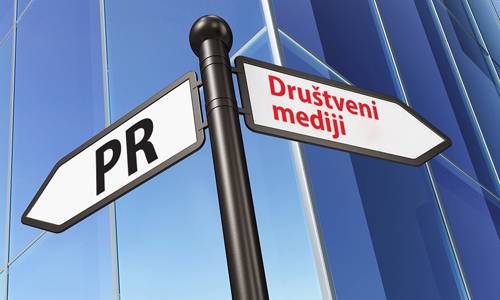

Even though public relations in many cases are an important part of promotion, social media gives a better return on investment and possibility of measuring success of campaign.
Imagine you are a small company and you have recently come up with a new product or service. You want this to come out because you want to make money on them. You decide on public relations which seem like a cool tactic to begin with – the price of the campaign is not that high, the agency you hired guarantees excellent results, and marketing department remains with a bigger budget for direct promotion. What do you get in the end? A whole bunch of press releases at a lower price than a classical lease of media space. This is where the forever present PR problem arises – lack of way to measure tangible results of sales increase in comparison to the time before the beginning of the campaign.
PR metrics
Why is that so? Why doesn’t brand awareness come in the package with sales income increase. And PR in its core is just that, spreading information about a certain product or service and company which gives/provides them. In PR, there are certain metrics: measuring value of reserved media space which is equally to the value of advertising space of a certain media, a technique known as AVE (Advertising Value Equivalency), then total number of posts and posts in relevant media. Some will say that post quality is extremely important but this metric represents the biggest problem. Most of today’s media, especially portals, publish PR texts without any changes or adjustments and it is very rare to find ones that are interested in additional information and want to expand the story. The only way to reach diversity is to get the PR person in the agency you hired to write a different story for each media. This of course costs much more. It is a generally known fact that journalists and editors expect free products and services in exchange for publishing.
Can success of a campaign be measured in PR?
Professional PR associations in 2010 introduced the first global measuring standard in public relations – Declaration of measurement principles, in which the focus is put on the effects, and not the results. This means that using a quality PR campaign you are trying to tell the target audience a product or service exists, achieve they like the product and in the end, encourage them to buy the service or the product. But how do you know if somebody read the article in newspapers, saw a commercial on TV, or heard the information on the radio and thus bought something? In classic media audience cannot be targeted, you can only hope that there will be ones interested in what you have to offer among the crowd. There is the problem of disinterest of audience for traditional media. This is where we reach the idea behind this text.
Social media and ROI
Although digital revolution has been a topic of conversation in Croatia for several years, only 12 percent of investment of media budgets goes to digital advertising. This is a devastating number considering this is the only form of advertising in which the success of the campaign was in correlation to increase in sales income. You don’t believe it’s true? It is sufficient to say Snapchat will soon introduce an option with which a company will be able to see how many people visited a shop, restaurant, or something else after seeing their advert.
There is Facebook as well, the biggest and most popular social network currently counting two billion users, of which more than a billion is online every day. In modern media space Facebook adverts are one of the most efficient ways of reaching the existing audience and potential clients. 95 percent of advertisers confirmed that Facebook gives the best return on investment in comparison to other social media. Considering the prices of an ad on this social platform on average is a dollar a day, you can take the risk and personally try if it works. The best advantage of social media is definitely precise targeting with which you substantially decrease the possibility of your advert being seen by somebody who is not interested. Through engagement you can easily monitor people’s reactions and that kind of feedback PR will never be able to provide.
So, let’s conclude: there is still no standard methodology or metrics for measuring the efficiency of PR although it is good and recommendable part of big communication campaigns. On the other hand, biggest social media developed sophisticated and concrete techniques to measure campaigns’ success. Furthermore, they are a powerful tool considering everyone can be a media and think up messages that have a direct line towards consumers. But not every strategy is a correct one and if you do not know which way to go and what to focus on – contact us, we are digital experts.



